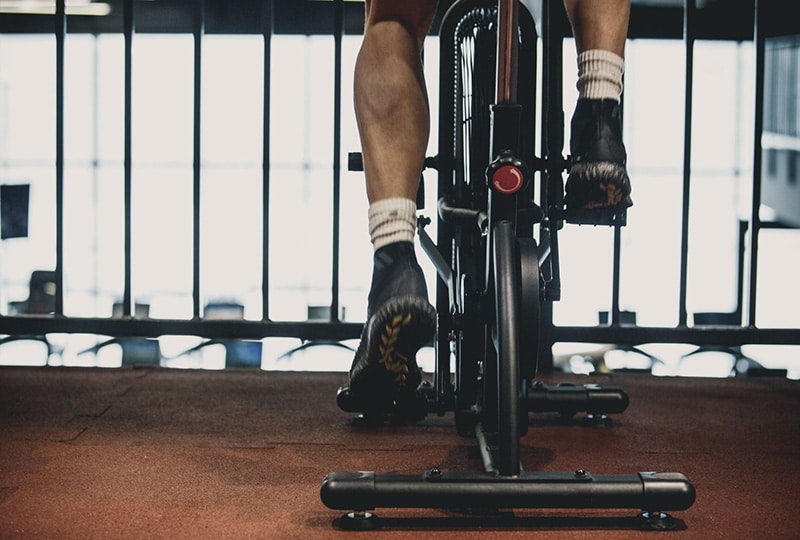Today, most athletes have become aware of the importance of recovery after exercise. Whether it is weight training or running, physical activity is particularly traumatic for the body. But sleep and diet are not the only levers for good physical recovery. The active recovery plays at least as important a role. I tell you all about this concept that will help you reach your goals faster.
What is active recovery?
For sports enthusiasts, rest time, nutrition and hydration are all elements that allow for better recovery and avoid muscle fatigue after exercise. Without this, it will be extremely difficult to achieve good muscle strengthening and progress effectively. This is equally valid for a fitness enthusiast than for an athlete with years of experience.
As you can see, today we are going to talk about recovery. There are 2 types :
- passive recovery,
- active recovery.
The passive recovery is to get a good night's sleep, adopt a healthy lifestyle and healthy eating and balanced (taking supplements can help you reach your macronutrient quotas) and to stay well hydrated.
Active recovery can take place after your workout, as part of a return to calm, or during your days offbetween 2 training sessions. It aims to make a physical effort of low intensity to reduce aches and pains and eliminate toxins.
Athletes sometimes tend to underestimate this aspect of sports practice. Of course, active recovery is not essential to progress. On the other hand, it is really effective in obtaining long-term results by recovering better and avoiding injury.
The benefits of active recovery
In concrete terms, the low intensity of the physical effort made during this recovery phase allows the muscle fibres to eliminate lactic acid by transforming it into muscle glycogen.
Thanks to this elimination of waste products and a better oxygenation of the muscles, your recovery will be fast and your performance better. This reconstruction process lasts between 10 and 30 minutes. To recover as much as possible, you should choose a aerobic work. This means that your activity should not cause muscle pain or difficulty in breathing.
Active recuperation also favors muscular relaxation. The "off" days are often experienced as unappreciable moments by athletes. Maintaining a light physical activity between sports sessions is an excellent way to keep the momentum going and to keep morale high, without falling into overtraining.
Finally, keep in mind that this physical recovery, even if it is far from being an intense effort, is also a way to burn more calories. Depending on your goal (weight gain, weight loss, etc.), consider this when setting up your your diet.
The best activities for active recovery
Several active recovery exercises can help relieve muscle tension from one workout to the next.
- The slow walk or jogging at a very low intensity: walking is a gentle activity that helps fight muscle fatigue. You can also opt for a low-intensity running session that will act as a decompression.
- Swimming This anti-stress sport has many benefits. Swimming allows the muscles to work without fatigue, while preserving the joints.
- The bike Cycling: just like swimming, cycling is a good activity for muscle regeneration. Be careful not to force yourself to avoid muscle pain. Just pedal quietly for 30 to 45 minutes, which will also provide a light workout for your cardiovascular system.
- Yoga Thanks to the different postures and the work on the mobility of the joints, yoga is particularly interesting in the context of active recovery. This activity is more and more popular with top athletes and sports coaches. However, be careful not to perform movements that are too demanding to avoid muscle fatigue.
- Stretching Stretching is part of active recovery. A good stretching session is therefore ideal for promoting muscle recovery. On the other hand, be careful not to stretch right after a workout, as this may aggravate the damage to the fibers. It is better to wait at least 2 hours after your sports session.
- Foam rolling The massage roller (or foam roller) is a fitness accessory that allows you to perform self-massages. A 15-minute massage on the different muscle groups offers an immediate feeling of well-being and helps relieve aches and pains and other contractures.
Conclusion
It is important to set up active recovery activities after your training sessions or on your rest days. In addition to passive recovery, the importance of which is no longer in question, gentle practices such as walking, swimming, cycling or stretching will enable you to perform better during the next session.
Need a coach to build muscle mass?
Additional articles :










2 Comments
Walking outdoors for 20-25 minutes after each workout for me
stretching 12-15 min after the workout + 15 mùn cycling at medium intensity + stretching calf legs 10 min after